5 reasons your IC content must focus on employees – not managers
When creating an internal communications plan–or, indeed, any business strategy – it’s our natural inclination to cater to the needs and priorities of our decision-makers.
They hold the purse strings; they dictate the direction and priorities for the business. What they say, goes. However, while catering what we call the ‘HiPPO’ – that is, the Highest Paid Person’s Opinion – is essential for the smooth running of any internal communications strategy, pushing their content may actually come at a cost to the wider organization.
When determining what content is most likely to support your IC objectives, adopting a bottom-up approach that places employees at the center is proven to deliver greater engagement. In this blog, we explore the reasons why.
The HiPPO: a driving force for internal communications, or a barrier?
While organizational design is undergoing a shift – thanks in part to the growing gig economy, remote working and a desire to fully optimize resources – the majority of organizations retain a traditional hierarchal structure.
Different tiers, ranging from the C-suite down to the shop floor employee, will have varying levels of power and influence.This impacts organizations and staff in a variety of ways.
On one hand, strategic direction and steering of business objectives from the top-down can help establish company culture, drive motivation and build the company brand. Employees look to the HiPPO to steer their decisions and priorities. Recognition from senior level is also shown to increase employee engagement, retention and productivity.
From an internal communications perspective, this has tremendous potential value. Many of us will recognize the repeated mantras of, “I want more transparent communication”, or “I want to be better informed” when we run global internal comms surveys. C-level communications and touch points such as CEO blogs or monthly ‘state of the nation’ updates can give the people what they want – insight, a feeling of inclusion, a sense of being appreciated or recognized.
However….
1. The ‘fear factor’: the HiPPO can hinder engagement or activity
In some circumstances, the HiPPO can stifle creativity or free communication. In face-to-face situations they dominate the room, communicating opinion as the accepted truth, often at the cost of collaborative or data-driven decision making.
In fact, the Rotterdam School of Management produced a paper titled, ‘We are (all) the champions: The effect of status in the implementation of innovations”, which highlights the superior success rate of junior managers’ projects compared to those run by senior managers. This highlights the risks the HiPPO approach brings.
This presents challenges from an internal communications perspective. C-suite decision-makers, by their level of seniority or experience, can cause grass-roots employees to feel unable to speak out or engage with the content they’re creating. In some organizational cultures this extends to a feeling of intimidation or fear. How many of your employees would feel confident disputing, challenging or even, in some cases, simply endorsing the opinion of a senior leader?
In the upcoming Interact State of The Digital Workplace report, I looked at telemetry data generated across over 100 million activities by 1.1 million users around the globe.
One of the areas of focus was the impact of CEO blogs in terms of engagement and encouraging collaborative behavior, from the relatively light effort of ‘Liking’ to the more committed activity of ‘Sharing’.
I looked at how likely someone in the business was to like at least one of those blogs over a month period, how likely they were to comment, then finally how likely they were to share that content.

Next, I took the most effective alternative approaches and ran them alongside for a comparison. The data showed that there are more effective ways to elicit responses:

The results show that when it comes to engagement with IC content, pushing senior management blogs won’t reap the greatest rewards.
2. The end goals of your IC content aren’t about management
What are your internal communications objectives?
To improve levels of employee engagement or retention? To improve the internal brand, or create employee advocates ? To give employees a voice? Keep them informed around the direction, goals and achievements of the organization?
The chances are, “keep the CEO happy” isn’t a primary objective (though admittedly, it tends to be the underlying goal for most departments). When creating IC content or drawing up your plan, it’s helpful to begin at the end – and consider how your strategy can support you in realizing those goals.
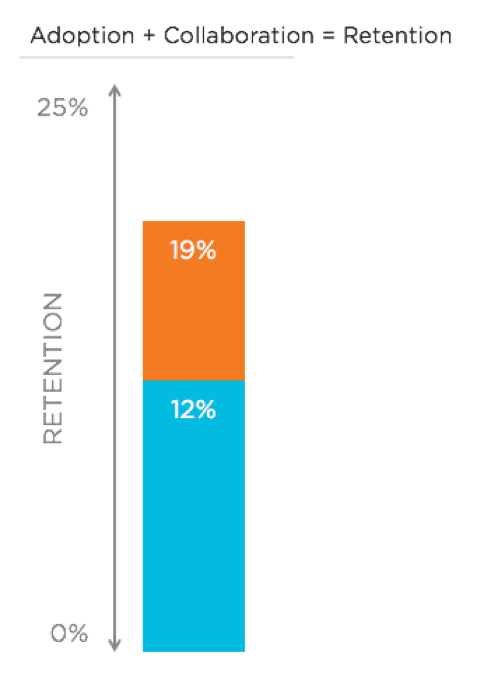
Our telemetry data shows that when 50% of employees are liking, sharing or commenting on IC content, retention increases by 12%. When this rises to 93% of employees engaging with content, as we saw with Interact customer Sport England, retention increases by 19%. Social activity – Liking, Sharing, Commenting – is the currency of digital internal communications. Therefore placing activity at the top of your KPI list is key.
Pushing HiPPO content rarely serves to empower employees with a voice; and as our first point and telemetry data shows, it doesn’t correlate to high levels of engagement or activity. A strategy that embraces bottom-up internal communication will better serve most IC objectives – and generate those much-needed indicators of engagement.
When it comes to keeping employees informed about the direction or achievements for the business, this by nature needs to come from the top-down; however as we explore in our next point, this doesn’t necessarily have to mean the top tier of management.
3. Employees are focused on the ‘what does this have to do with me?’ element of IC content
Our Digital Workplace Report data shows that if you want to encourage likes or engagement from employees, you’ll be far more successful by ensuring departments blog.
Communicating changes which impact employees or celebrating individual successes of people in departments will see almost double the chance of an employee liking at least one of these blogs in a month. The key aspect here is the ‘WIIFM’ – the ‘what’s in it for me?’.
While senior management blogs arguably do have relevance for employees, in our experience these are typically strategic or top-level. They talk about the business as a whole, and may use language unfamiliar to those at the grass roots of the business. In larger or dispersed organizations where individual employees may never even meet those operating in the C-suite, this gap can make content feel too far removed from their own roles or experiences.
Taking an employee-first approach, it may be worth considering a cascade for internal communications that looks to middle managers as the link between the top and bottom ‘tiers’ of a business.
For example, if the company needs to communicate change to employees, a management blog can give the top-level overview or essential information; from this, departmental blogs can translate what this change means in real terms for individuals in that particular department. Middle management or department leaders are also more likely to know the individual contributions to successes or achievements, and can recognize these accordingly – encouraging greater engagement with content.
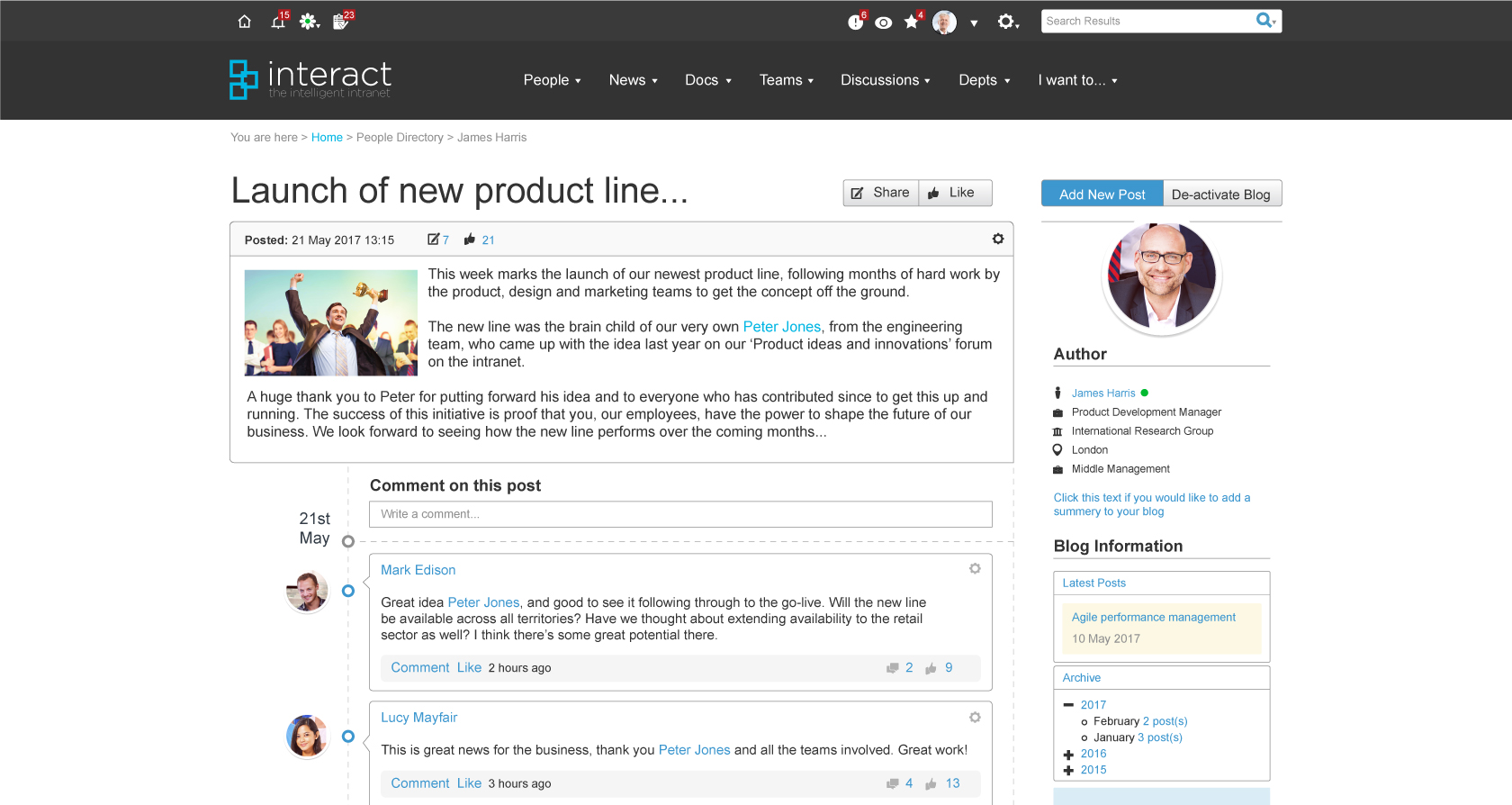
4. Employee content plays a central role in building relationships and the culture
Our Digital Workplace Report findings also show that personal blogs of employees are more successful at generating comments or interactions.
In the social digital workplace, this is a trend we see time and again. People identify with people like them: in internal communications terms, this means they are more likely to engage with or respond to fellow colleagues who sound like them, act like them and have similar roles within the organization.
This also has a key role in driving employee engagement. As part of its globally recognized Q12 Employee Engagement survey, Gallup point to the importance of having ‘a best friend at work’ – the value of relationships with colleagues has a measurable impact on levels of employee morale, happiness and engagement.
However, in an increasingly globalized economy, many employees can now be found working remotely or even within different timezones compared to their peers. This makes the ability to create a common culture or nurture relationships particularly challenging. By providing non-work focused insights into personal aspect of their lives, employees can leverage internal communication tools to build these connections with their colleagues.
At Interact, this has included use of our intranet blog to share weddings, holidays or birth announcements; as part of our onboarding process and to familiarize new users with the intranet, new starters are also encouraged to introduce themselves with an informal blog. Informal forums also play a vital role in our IC content strategy: encouraging a digital culture where people can get to know one another and connect.
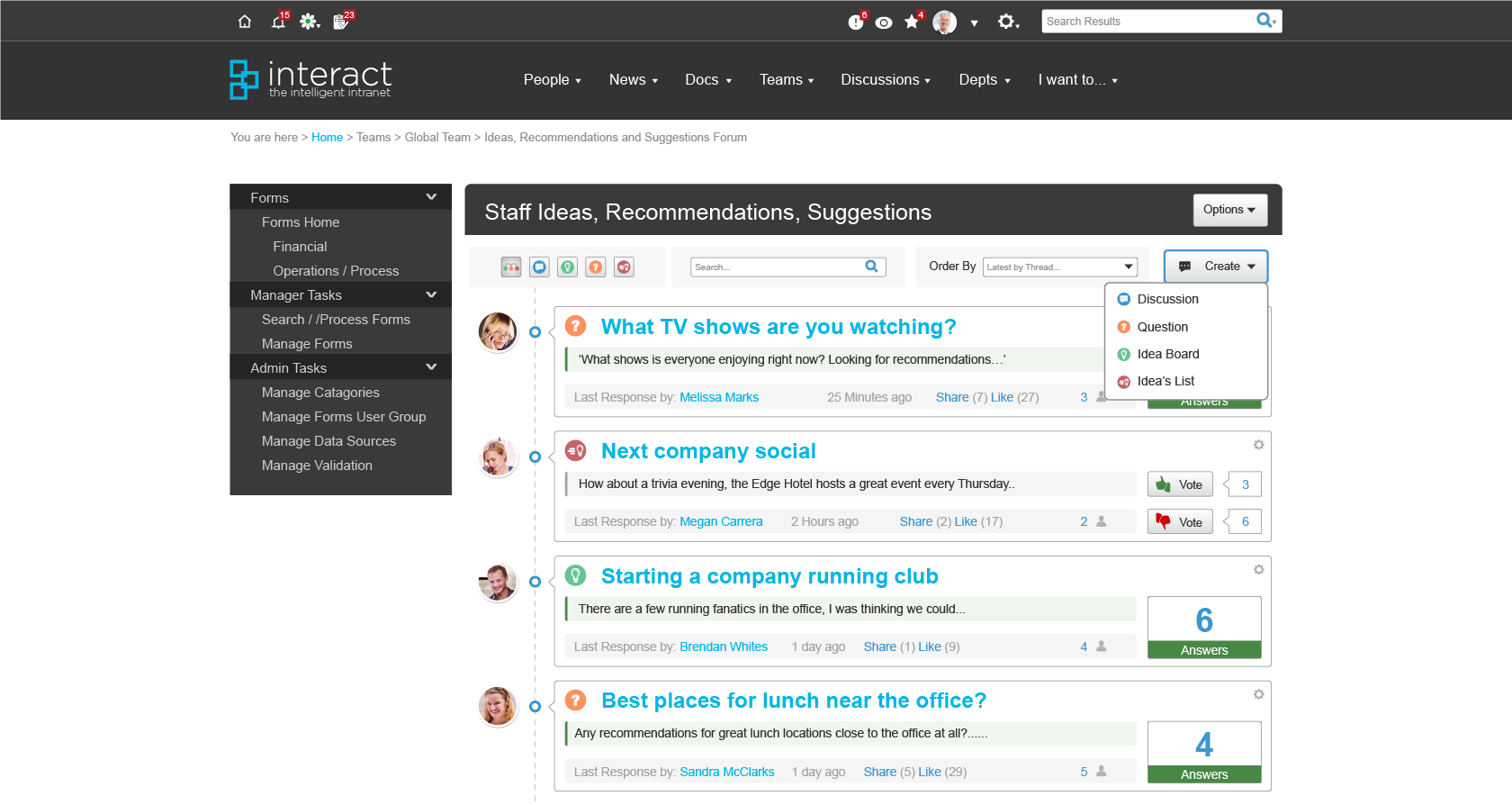
(Forums that have an informal basis, rather than focusing on role or project specific topics, encourage employees to engage and collaborate more than formal or structured senior level content).
5. An employee-focused approach to creating – and tapping into – a culture of innovation
Innovation is at the heart of business success. We don’t grow by standing still – in fact, a McKinsey survey shows more than 70 percent of senior executives agree innovation will be at least one of the top three drivers of growth for their companies in the next three to five years.
Getting great ideas from employees is one of the most powerful ways to stimulate innovation; 94% of senior executives agree that people and corporate culture are the most important drivers of innovation, according to the pwc report ‘Unleashing the power of innovation’.
As the champions for internal communications, it is our task to foster this culture and facilitate ideation. But if we put the HiPPO at the forefront of our IC content strategy, we actively hinder this – for the same reasons highlighted in the first point. If we’re relying on employees engaging with, or responding to C-suite content for ideation, we won’t truly tap into the potential of our employees.
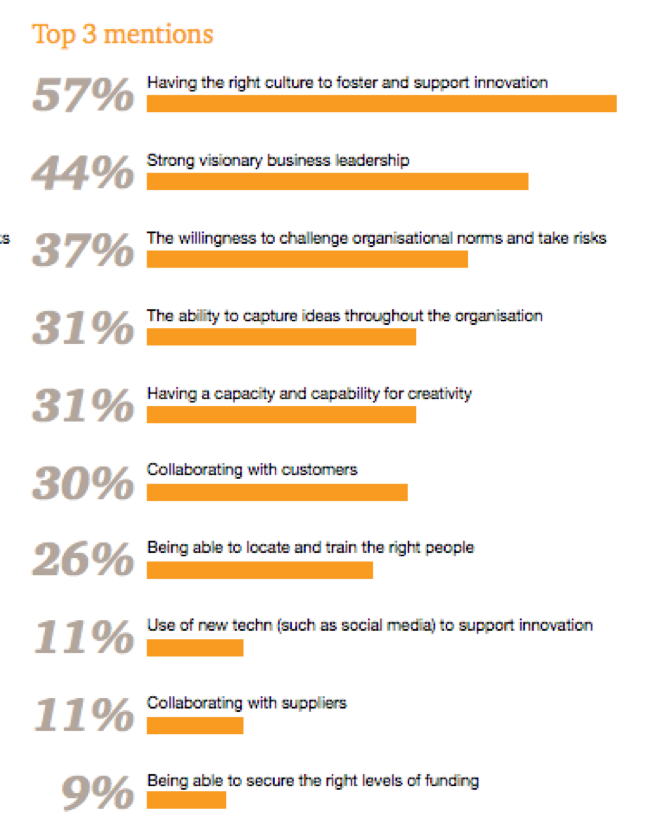
(In its survey on innovation, pwc posed the question: ‘What do you think are the most important ingredients for successful innovation at a company?’. Having the right culture was ranked in the top 3 by 57% of respondents, while 37% pointed to the ability to capture ideas throughout the organization).
From our telemetry data, we see that ideation forums unsurprisingly are a far more effective approach – almost 50% more successful.
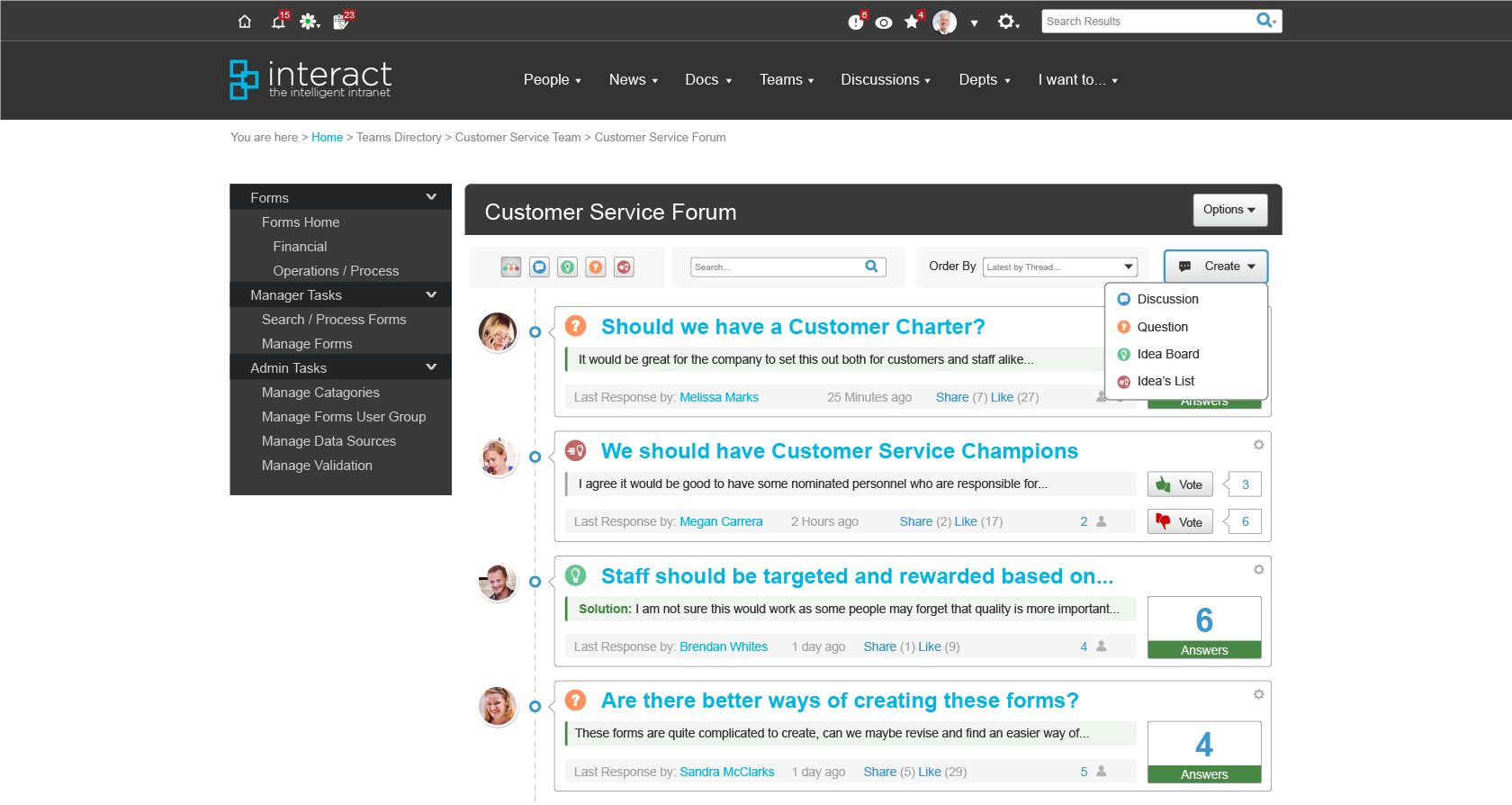
(Ideas, suggestions and discussions within a collaborative space such as an intranet forum offer a more informal, employee-focused approach to facilitate innovation).
So, should we be eliminating the C-Level Blog?
Definitely not! The C-level blog is shown to deliver value and plays a vital role in giving employees visibility of those operating ‘at the top’, as well as understanding the general direction of the organization.
However, limiting internal communications content to C-Level blogs, updates or campaigns will give you limited results and is unlikely to achieve the employee voice you are looking to nurture.
Supplement your C-level blogs or communications with content from people across the organization. Take the time to explain to management and staff alike why employees should like, share or comment. Explaining the basics can often have untold successes.
Consider investing in training your C-Level management and employees to blog effectively, and vary the subject of your blogs or IC content to cover different aspects of both business and personal interest.
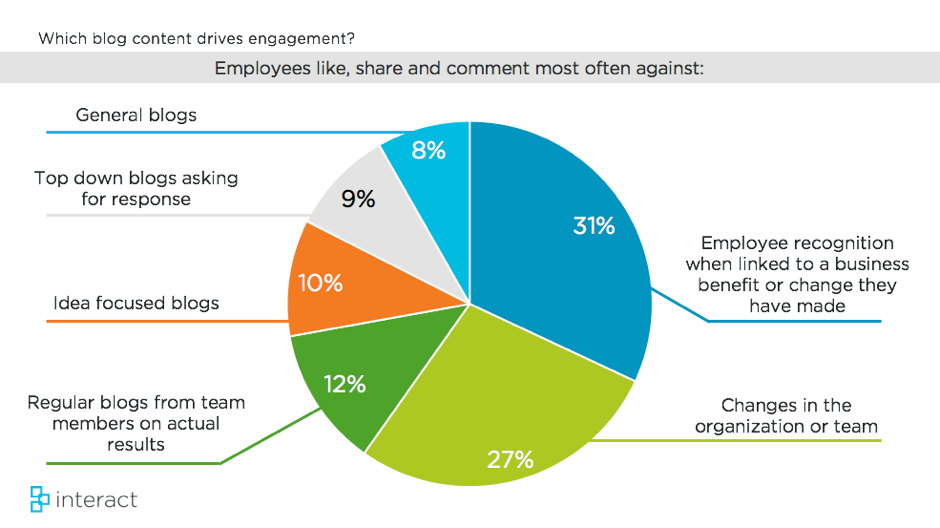
Mixing it up with more creative comms ideas will also drive engagement and support you in achieving those long term objectives.
An employee-first mindset for IC content, as our findings show, can dramatically impact on how your staff respond to internal communications. What approaches have worked best for you? Leave us a comment and let us know.
